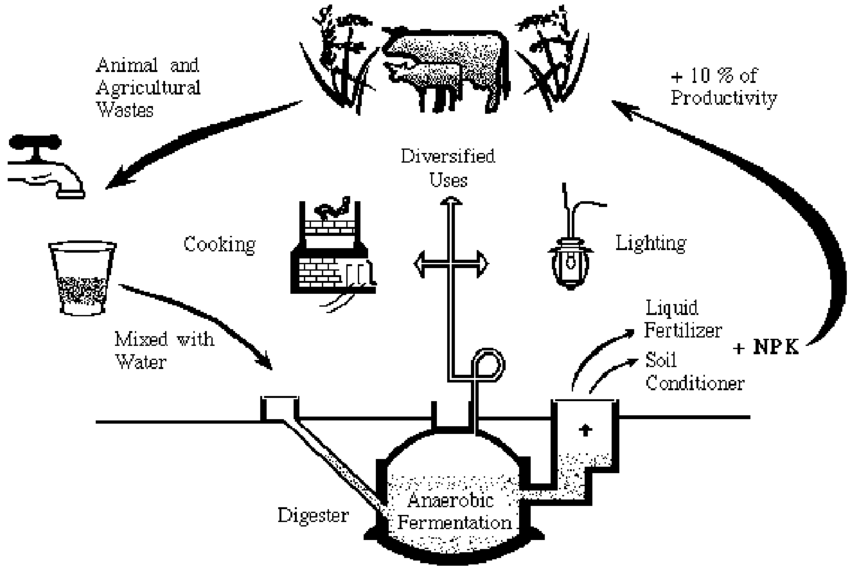What is Biomethanation

- Biomethanation is a process by which organic material is microbiologically converted under anaerobic conditions to biogas.
- Methanogenesis or biomethanation i.e., formation of methane, is done by microbes known as methanogens.
Three main physiological groups of microorganisms are involved:
- fermenting bacteria,
- organic acid oxidizing bacteria, and
- methanogenic archaea.
- Microorganisms degrade organic matter via cascades of biochemical conversions to methane and carbon dioxide.
What is stubble burning?
- Stubble burning is intentionally setting fire to the straw stubble that remains after grains, like paddy, wheat, etc., have been harvested. The practice was widespread until the 1990s, when governments increasingly restricted its use.
- The burning of stubble, contrasted with alternatives such as ploughing the stubble back into the ground or collecting it for industrial uses, has a number of consequences and effects on the environment.
Helpful effects
- Kills slugs and other pests
- Can reduce nitrogen tie-up
Harmful effects
- Loss of nutrients
- Pollution from smoke
- Damage to electrical and electronic equipment from floating threads of conducting waste
- Risk of fires spreading out of control
- The main adverse effects of crop residue burning include the emission of greenhouse gases (GHGs) that contributes to the global warming, increased levels of particulate matter (PM) and smog that cause health hazards, loss of biodiversity of agricultural lands, and the deterioration of soil fertility




